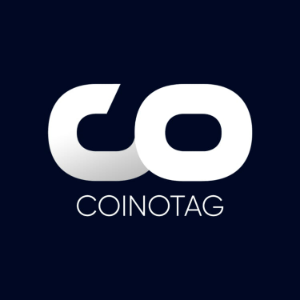Market Pulse
Singapore, a global financial hub renowned for its progressive stance on digital assets, has announced a significant delay in the full implementation of its advanced crypto regulatory standards for financial institutions, pushing the timeline to 2027. This move by the Monetary Authority of Singapore (MAS) signals a cautious approach to integrating complex crypto-related activities into the traditional banking sector, prioritizing robust risk management over rapid adoption. The decision underscores the intricate challenges inherent in bridging the nascent digital asset economy with established financial frameworks, prompting a closer look at the rationale and potential implications for both the local and international crypto landscape.
Rationale Behind the Extended Timeline
The MAS’s decision to extend the rollout of its crypto standards for banks is primarily driven by the profound complexities and nascent nature of the digital asset space. Regulators worldwide are grappling with the rapid evolution of cryptocurrencies, decentralized finance (DeFi), and tokenized assets, making it difficult to establish comprehensive, future-proof frameworks. The MAS has cited the need for financial institutions to develop more sophisticated capabilities in several key areas:
- Operational Resilience: Ensuring robust systems and processes can handle the unique technical and security challenges of digital assets.
- Cybersecurity: Implementing cutting-edge defenses against the heightened risk of hacks and breaches inherent in crypto environments.
- Risk Management: Developing sophisticated models to assess and mitigate market, liquidity, and operational risks associated with crypto exposures.
- Interoperability: Establishing seamless integration with existing financial infrastructures without compromising stability.
- Consumer Protection: Building stronger safeguards for retail and institutional investors engaging with digital asset products.
This pragmatic delay indicates a preference for thoroughness over speed, reflecting a global trend where regulators are proceeding with caution in the face of market volatility and emerging risks.
Implications for Institutional Crypto Adoption
For banks and other traditional financial institutions eyeing deeper engagement with digital assets, this delay presents a mixed bag of challenges and opportunities. On one hand, it pushes back the immediate prospects of broader institutional participation in regulated crypto activities. Banks that were anticipating a clearer regulatory runway to offer services like crypto custody, trading, or tokenized asset management may now have to recalibrate their timelines and investment strategies. This could temporarily dampen the speed of institutional capital inflow into Singapore’s crypto market.
On the other hand, the extended timeline provides a crucial window for institutions to:
- Strengthen internal capabilities and infrastructure for handling digital assets.
- Invest in research and development for secure and compliant crypto solutions.
- Collaborate with fintech firms to build expertise and integrate new technologies.
- Pilot programs in a more controlled environment, learning from early successes and failures without the pressure of immediate full-scale compliance.
Ultimately, a more robust regulatory framework, even if delayed, is likely to instill greater confidence in the long run, attracting more conservative institutional players.
Singapore’s Position in the Global Regulatory Landscape
Singapore’s measured approach contrasts with, yet also aligns with, the varied pace of crypto regulation globally. While some jurisdictions, like the European Union with its MiCA framework, have moved faster to implement comprehensive rules, others, such as the United States, remain fragmented. The MAS’s decision highlights a shared recognition among leading financial regulators that a ‘rush to regulate’ might inadvertently create vulnerabilities. Singapore’s reputation as a well-regulated financial center means its policies are often watched closely by other nations. This delay could influence other jurisdictions to also consider more extended preparatory periods for banks integrating crypto.
Next Steps for Industry Participants
With the 2027 target now set, industry participants in Singapore are advised to intensify their preparations. This includes:
- Engaging proactively with MAS consultations and guidance.
- Investing in talent development focused on blockchain technology, crypto forensics, and digital asset compliance.
- Developing robust internal governance frameworks specifically for digital assets.
- Exploring strategic partnerships with established crypto infrastructure providers.
The interim period should be viewed as an opportunity for strategic positioning rather than a setback.
Conclusion
The Monetary Authority of Singapore’s decision to postpone the full implementation of its crypto regulatory standards for banks until 2027 is a testament to the complex, evolving nature of the digital asset landscape. While the delay might temper immediate expansion plans for some institutions, it ultimately signals a commitment to fostering a secure, stable, and sustainable crypto ecosystem. By allowing more time for robust development of risk management and operational capabilities, Singapore aims to build a stronger foundation for digital assets, ensuring that its financial sector remains at the forefront of innovation while safeguarding its integrity and stability in the long term.
Pros (Bullish Points)
- Allows financial institutions more time to build robust infrastructure and expertise for secure crypto integration.
- Demonstrates a cautious, responsible regulatory approach, potentially fostering greater long-term confidence and stability.
Cons (Bearish Points)
- Delays broader institutional participation and capital inflow into Singapore's regulated crypto market in the short term.
- Could create temporary uncertainty for banks and crypto firms planning their expansion based on earlier timelines.



